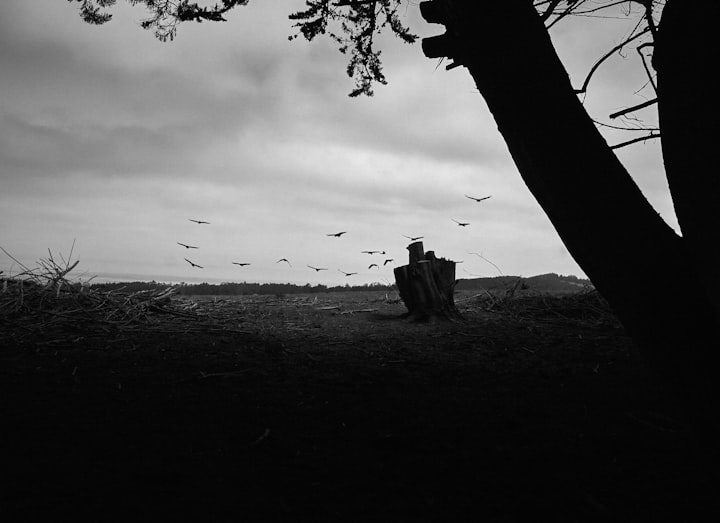
The Anatomy of a Murder: Examining Crime Scenes and Evidence
Crime scene investigation is a crucial aspect of solving criminal cases. It involves the meticulous examination and analysis of crime scenes and the evidence present within them. By carefully analyzing the physical evidence left behind, forensic experts can reconstruct the events that took place, identify potential suspects, and provide critical insights into criminal investigations. In this article, we will explore the various components of crime scene investigation, the techniques used to collect and analyze evidence, and the role of forensic science in solving crimes.
Introduction
Crime scene investigation refers to the systematic examination of a location where a crime has occurred. It involves collecting and analyzing evidence to establish a connection between the crime and the individuals involved. Crime scene investigators, often referred to as forensic experts, play a crucial role in this process. They are trained professionals who possess the necessary skills and knowledge to handle crime scenes, collect evidence, and document the findings.
The Role of Crime Scene Investigators
Crime scene investigators have a wide range of responsibilities. They must possess a keen eye for detail, excellent observational skills, and the ability to handle complex situations. Their qualifications typically include a background in forensic science, criminal justice, or a related field. Additionally, they undergo specialized training to develop expertise in evidence collection, preservation, and analysis.
Initial Assessment of the Crime Scene
Upon arrival at a crime scene, the first priority for investigators is to secure the area and ensure the safety of all individuals involved. This involves establishing a perimeter to prevent contamination and unauthorized access. Once the scene is secure, the investigators proceed with the initial assessment.
During the initial assessment, the investigators carefully observe the scene to identify potential evidence and areas of interest. They take photographs and sketches to document the layout and condition of the crime scene. These visual records serve as valuable references during the investigation and can be presented as evidence in court.
Collecting and Processing Physical Evidence
Physical evidence plays a vital role in criminal investigations. It can include various items such as fingerprints, DNA samples, weapons, fibers, or any other object that may have a connection to the crime. Collecting and processing physical evidence requires meticulous attention to detail and adherence to specific protocols.
Investigators use a variety of techniques to collect physical evidence, including wearing gloves, using sterile containers, and employing specialized tools like tweezers, swabs, and evidence bags. It is crucial to maintain the chain of custody throughout the process to ensure the integrity and admissibility of the evidence in court.
Forensic Analysis of Evidence
Once the physical evidence is collected, it is sent to a forensic laboratory for analysis. Forensic scientists utilize a wide range of techniques and technologies to examine the evidence and extract valuable information. DNA analysis, fingerprint identification, ballistics, and trace evidence analysis are just a few examples of the forensic analysis methods used.
DNA analysis has revolutionized criminal investigations. By comparing DNA profiles from crime scene evidence to known individuals or DNA databases, forensic experts can establish links between suspects, victims, and crime scenes. Numerous cases have been solved, and innocent individuals have been exonerated through DNA analysis.
Fingerprints are another crucial piece of evidence commonly found at crime scenes. Each person's fingerprints are unique, and they can be used to identify suspects or link individuals to specific locations. Investigators use techniques such as dusting, lifting, and photographing fingerprints to preserve and analyze them.
Impressions, such as shoeprints, tire tracks, or tool marks, can also provide valuable clues. These impressions can be compared to known samples or cataloged databases to aid in identifying suspects or linking them to specific objects or locations.
Trace Evidence and its Significance
Trace evidence refers to small and often microscopic materials that can be transferred between individuals, objects, or environments during a crime. This can include hair, fibers, paint chips, glass fragments, or any other minute material. Although trace evidence may seem insignificant, it can play a crucial role in establishing connections between suspects, victims, and crime scenes.
Forensic scientists meticulously collect, analyze, and compare trace evidence using techniques such as microscopic examination, chemical analysis, and spectroscopy. The presence of specific fibers or paint chips, for example, can provide valuable insights into the origin or source of a material, potentially linking a suspect to a crime.
Digital Evidence and Cybercrime
In the digital age, digital evidence has gained significant importance in criminal investigations. It includes any electronic data that can be used as evidence, such as emails, text messages, social media posts, or computer files. The analysis of digital evidence requires specialized knowledge and tools.
Digital evidence can be crucial in cybercrime investigations, where crimes are committed using computers or the internet. Investigators utilize techniques such as data recovery, computer forensics, and network analysis to uncover digital evidence. However, the ever-evolving nature of technology poses challenges in keeping up with new methods used by criminals.
Bloodstain Pattern Analysis
Bloodstain pattern analysis is a specialized field within forensic science that focuses on the examination and interpretation of bloodstain patterns found at crime scenes. The size, shape, distribution, and trajectory of bloodstains can provide valuable information about the events that occurred during a crime.
Forensic experts document and analyze bloodstain patterns using techniques such as luminol testing, blood spatter analysis, and trajectory reconstruction. By carefully studying these patterns, investigators can determine the type of weapon used, the position of the individuals involved, and the sequence of events, helping to reconstruct the crime scene.
Ballistics and Firearms Examination
Ballistics and firearms examination involve the analysis of firearms, ammunition, and related evidence to determine their involvement in a crime. Forensic experts examine bullets, casings, and firearm marks to identify the type of firearm used, trace its ownership or origin, and potentially link it to other crimes.
By comparing the unique marks left on bullets or casings, forensic experts can establish connections between different crime scenes or weapons used in multiple incidents. Ballistics analysis has been instrumental in solving complex cases and linking suspects to crimes through the examination of firearm evidence.
Case Studies: Famous Crime Scenes and their Analysis
Throughout history, several high-profile cases have captivated the public's attention and demonstrated the power of crime scene investigation and forensic analysis. By examining these cases, we can gain insights into the techniques used by investigators and the impact of forensic science in solving crimes.
One such example is the O.J. Simpson murder trial in 1995. The trial involved the examination of various types of evidence, including DNA analysis, bloodstain pattern analysis, and trace evidence. The use of these forensic techniques played a pivotal role in the outcome of the trial.
Challenges and Limitations of Crime Scene Investigation
While crime scene investigation and forensic analysis have proven to be invaluable tools in solving crimes, there are inherent challenges and limitations that investigators face. Factors such as weather conditions, contamination, the transient nature of evidence, and the interpretation of complex patterns can complicate the analysis process.
Additionally, technological advancements in criminal methods pose new challenges for investigators. Criminals are constantly finding innovative ways to commit crimes and avoid detection, necessitating the continuous improvement of forensic techniques and methodologies.
Ethical Considerations in Crime Scene Investigation
Ethical considerations are of utmost importance in crime scene investigation. Investigators must adhere to strict ethical standards to maintain the integrity of the investigation and ensure fairness to all parties involved. It is crucial to handle evidence ethically, avoiding any potential bias or manipulation that could compromise the investigation.
Maintaining professional ethics also involves protecting the privacy and rights of individuals involved in the investigation, including victims, suspects, and witnesses. Investigators must prioritize the pursuit of truth and justice while respecting the legal and ethical boundaries of their profession.
Conclusion
Crime scene investigation and forensic analysis play a pivotal role in solving criminal cases. By carefully examining crime scenes and analyzing the evidence present, investigators can uncover vital clues, establish connections, and provide critical insights into the events that took place. The advancement of forensic science and technology continues to enhance the accuracy and reliability of evidence analysis, leading to successful convictions and ensuring justice is served.
With each new case, forensic experts refine their techniques and expand their understanding of crime scene investigation. The anatomy of a murder goes beyond the visible aspects and delves deep into the minute details left behind. Through the meticulous collection, analysis, and interpretation of evidence, crime scene investigators provide an objective voice that helps bring criminals to justice and offers closure to the victims and their families.
FAQs (Frequently Asked Questions)
Can crime scene investigators solve every crime?
While crime scene investigators play a crucial role in solving crimes, not all cases can be solved solelybased on their analysis. Factors such as the availability and quality of evidence, the complexity of the case, and the cooperation of witnesses or suspects can impact the outcome of an investigation.
How long does it take to analyze evidence in a forensic laboratory?
The time required to analyze evidence in a forensic laboratory can vary depending on the nature of the evidence, the workload of the laboratory, and the complexity of the case. Some analyses can be completed within a few hours or days, while others may take weeks or even months.
What happens if evidence is mishandled or contaminated?
Mishandling or contamination of evidence can have severe consequences on the integrity of the investigation and the admissibility of the evidence in court. Proper protocols and chain of custody procedures are in place to minimize the risk of contamination and ensure the reliability of the evidence.
Can digital evidence be tampered with or altered?
Digital evidence can be tampered with or altered, making it essential for investigators to employ robust techniques and tools to ensure its authenticity. Digital forensic experts utilize specialized methods to detect tampering and validate the integrity of digital evidence.
How does crime scene investigation contribute to the criminal justice system?
Crime scene investigation provides vital information and evidence that helps the criminal justice system in determining guilt or innocence, identifying perpetrators, and building strong cases for prosecution. It ensures that the justice system operates based on facts, evidence, and the rule of law.
About the Creator
Ted Bundy
Welcome to our true crime blog, where we unravel mysteries, explore criminal minds, and share gripping narratives. Join us for captivating investigations and engage in thoughtful discussions on the pursuit of justice.





Comments
There are no comments for this story
Be the first to respond and start the conversation.